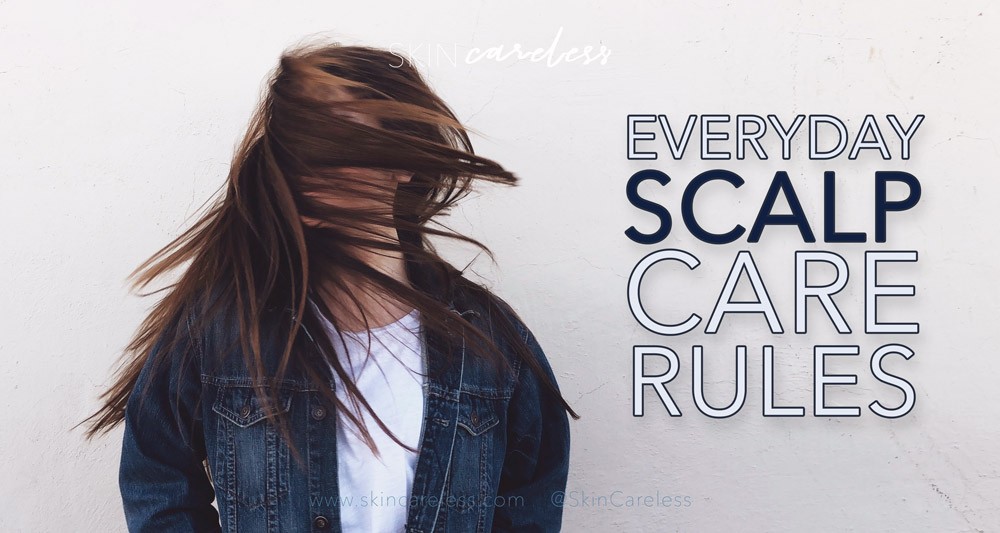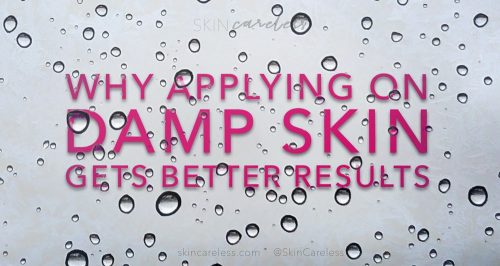I want you to think of a bald man. That’s right – a shiny-headed bald man.
What’s that on top of his head, hidden by hair on most of us? It’s skin! Just like any other part of the body. Everybody has this huge amount of (usually) hidden scalp skin that they take around every day, not looking after it properly.
If you’re anything like me, you pour a lot of time and energy into your skin, but completely neglect your scalp. Even though the health and growth of our hair – many people’s pride and joy – relies on it being well cared for. It’s almost funny when you think about it.
I’d say that most people just choose any cheap shampoo – or maybe one their hairdresser “recommended” (*cough* shilled) – and call it a day. They’ll use it everyday or every other day in a hurried shower before going on their way to work and not think much more about it.
Without due care, infections and diseases can set in and have a long lasting impact on your wellbeing and the quality of your hair growth.
Luckily, scalp care isn’t rocket science – let’s dive in.
Common scalp issues
Perhaps the two most common scalp problems are dandruff and psoriasis.
Dandruff
Dandruff is when you notice an excess of white, flaky scalp skin that falls from your head. It can be embarrassing and uncomfortable, due to the itch that comes along with it. Dandruff is usually triggered by very dry skin, or a mild fungal infection which is a common extension of a body-wide condition called seborrhoeic dermatitis. It affects a whopping 50% of the world’s population. Luckily, all of these causes of dandruff are controllable if not completely treatable.
Psoriasis
Psoriasis is an autoimmune condition that leads to red, scaly, raised patches of skin. It’s a little less common that your everyday dandruff and a little more difficult to treat, but it can often be managed. Scalp plaques are present in 45-56% of psoriasis patients (who make up 2-3% of the world population).
Other notable problems from a lack of good scalp hygiene include hair loss and an overly oily scalp.
A key step in the management of all these conditions is proper and thorough daily scalp care.
Scalp cleansing
How often to wash your hair
The real reason for hair washing isn’t actually washing the hairs. It’s washing your scalp. Just like your skin, you should clean your scalp regularly – but gently. Wash too often and too harshly and you’ll irritate and dry it out. But wash too infrequently and you’ll actually risk irritation and infection. You need to regularly remove built up skin and oils to allow for healthy airflow and unencumbered hair growth.
The ideal length of time between washes is to essentially extend the time between washes gradually, paying attention to how your scalp adjusts and produces less oil, until you feel your hair has reached its limits. For me, a very oily person, that’s every other day. But for many people with dry skin and curly hair, they can often go far longer. If you sense any scalp itching or smells you’ve waited too long and need to increase the frequency again.
Choosing a shampoo and other alternatives
Especially if you’re washing your hair only occasionally, it’s imperative that the cleanser you choose is effective. A good shampoo or cleanser will not contain skin irritants like sodium laureth/lauryl sulfate. Coco betaine and other surfactants are a great compromise if you like lather, but otherwise ‘low-poo’ or ‘no-poo’ options are even better – just be sure to get your technique right!
Proper scalp cleansing technique
The key to scalp cleansing is in the friction. You should be firmly massaging your scalp with the pads of your fingers for quite some time – at least a full minute – to loosen skin cells and old hairs. This is probably more than you’re used to and may feel unusual at first, but it’s essential. This will also have the benefit of stimulating circulation – and it feels soo good!
Now repeat after me: Shampoo is a wash for your scalp, not your hair. There’s no need to go lathering the ends of your hair which are dead, when the point is to clean the scalp skin!
Always rinse your cleanser out thoroughly and with the same scrubbing motion at the roots.
Hair drying methods
While not being dried out, a comfortably dry scalp is a happy scalp. Never leave your wet hair tied up where it can trap moisture by your scalp. Ever heard of athlete’s foot? When your skin can’t dry out in a normal amount of time for whatever reason, this can invite fungal infections and rashes, and in the case of your scalp, create dandruff and hair loss.
On the other hand, blasting your scalp every day with a blowdryer on high heat can cause flaky and tight, irritated scalp skin. It’s better to limit the use of hair dryers wherever possible.
The scalp-safe way to dry your hair
The healthiest and lowest-effort drying method is air drying. Start by gently patting your scalp with a towel (preferably microfibre as they’re the most absorbent) then squeeze the lengths of your hair dry. Try flipping your hair side to side as it dries to encourage airflow to the roots.
If you have thick or curly hair and struggle getting the airflow needed to make your roots dry, I recommend hitting your scalp with a warm (not hot) stream from the hair dryer with a diffused detachment to help it along.
Incorporate moisturisation
Just like our faces, scalps need moisturiser sometimes too. Now your scalp is safely clean and dry, it’s a good idea to listen to how it feels and when needed, give it back a little bit of elasticity and emollience to keep it flake-free and prevent your scalp skin from overly drying out.
Often the natural oils from your skin will be enough to keep your scalp hydrated if you’re allowing them to rebuild between washes. That’s why it’s so important to avoid overwashing!
If you have a particularly dry scalp, you can actually add extra oils, and use them to massage into and rehydrate the skin.
How to use scalp oils
First, you’ll need to choose your oil. Fan-favourites include the super-light jojoba oil, or thick and moisturising castor oil. Ensure you’re using a natural carrier oil, rather than a hair styling oil, which usually contain silicones and won’t absorb into the scalp skin in the way we want.
A great time to use oil is as a pre-shampoo treatment. It’s ideal for when it hasn’t been long since your last shower and your scalp is feeling a little rough and dry, but you’re sweaty and your hair needs washing or it just feels built up with product. Just apply and massage small amounts of your chosen hair oil gently all over with the pads of your fingers 5 minutes before getting in the shower! The oil will help give your skin a little extra buffer the harshness of the shampoo and keep your scalp calm and happy.
If you have super dry skin and hair, you may also be able to get away with a very light amount of oil applied as a leave-in scalp moisturiser – but test this out first on a day where you don’t have to go anywhere important!
Those with dandruff note: oils can be a trigger for seborrhoeic dermatitis. Proceed with caution!
Anti-dandruff care
Dandruff is regularly caused by a fungal infection of the scalp. In situations like these, your skin needs to be treated with medicated shampoos. These include special ingredients that are toxic to fungi.
Some of the most highly recommended on the market include Head & Shoulders (Pyrithione Zinc), Selsun (Selenium Sulfide), Nizoral (Ketoconazole) and Coal Tar.
Some people are predisposed to dandruff and may need to use these kinds of shampoos indefinitely to keep dandruff away. However, it’s best to try incorporate your anti-dandruff shampoo in a rotation (say, every other wash) where possible. This limits the exposure to the often drying formulas and gives your scalp a break.
Scalp-focused sun protection
That’s right – not even your scalp is safe from the sun! There’s nothing more painful than a sunburnt scalp. The easiest (and less fussy) way to avoid the sun on your scalp is to just wear a hat. Alternatively, apply sunscreen to your hairline and along your part whenever you’re anticipating spending time outdoors. If you don’t like the idea of cream, a spray sunscreen or another lightweight option won’t gunk up your hair as badly. Another great tip is to avoid parting your hair in a specific place too long. Leave your hair out and free and change the parting often to give different areas a break from the sun. Most importantly, keep your new washing and drying techniques in mind when it’s time to wash the sunscreen out and start fresh!





